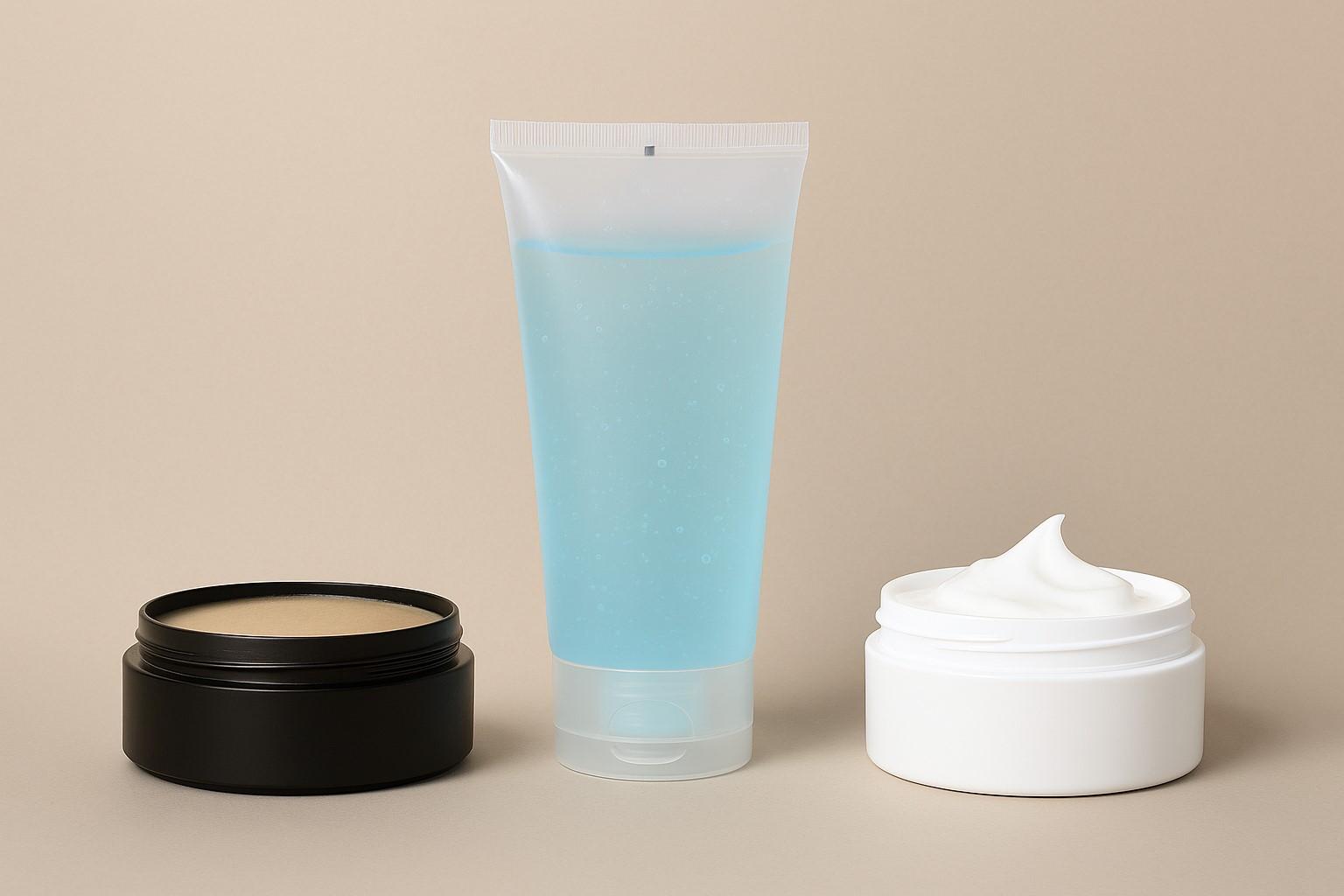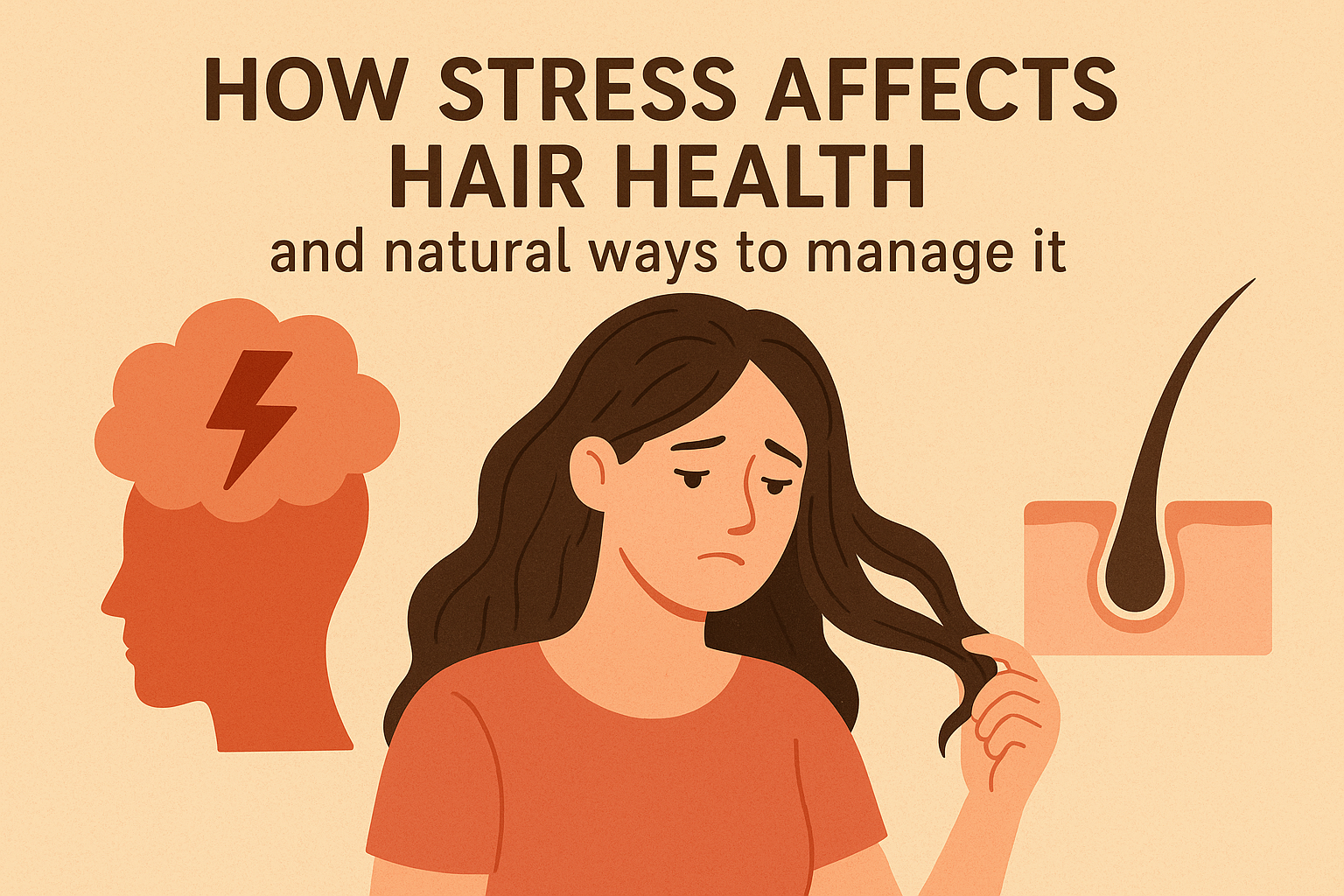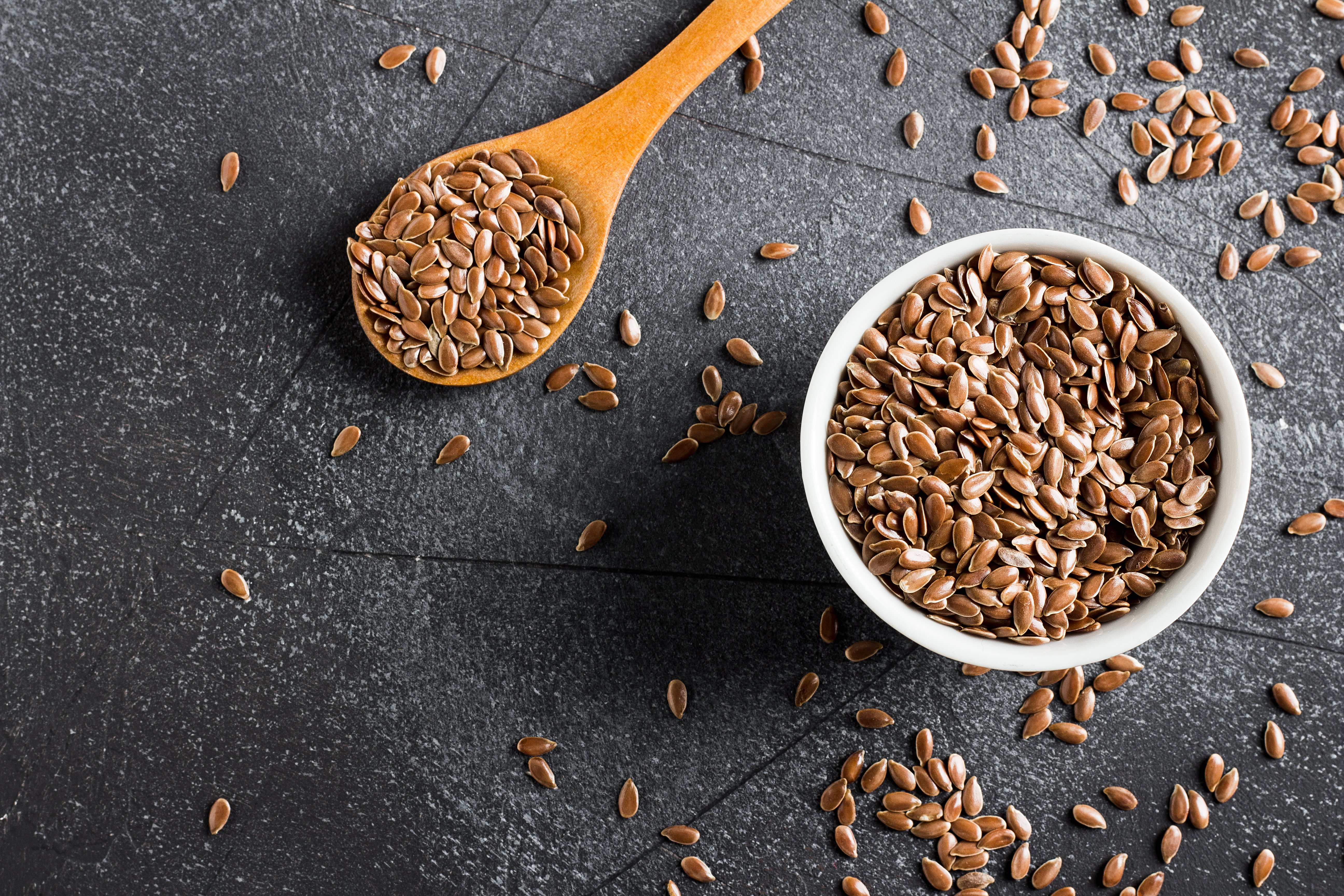What you apply to your hair can change how it looks, feels, and behaves throughout the day. It may seem like a small decision, but your styling product affects more than just appearance. The texture, shine, and strength of your hair depend on this daily choice.
Some people want their hair to stay in place all day. Others need light hold and natural shape. What works for one hair type may not work for another. This is why knowing your options is important.
Most people end up choosing between hair wax vs hair gel vs hair cream. Each product works in a very different way. Wax gives control without stiffness. Gel locks the style but can dry out hair. Cream offers moisture and light hold. These details are easy to miss but make a big difference.
This guide will compare hair wax vs gel vs cream to help you decide what fits your needs. It will break down how each product works, what hair types they suit, and how they affect your scalp over time.
You do not need a shelf full of styling products. You just need the right one that suits your hair type and routine. That is what this blog will help you find. Is hair cream good for hair or is gel good for hair? Let’s find out.
Also Read: 7 Reasons To Use Conditioner After Every Wash
Key Differences: Hair Wax, Hair Gel, and Hair Cream Explained
Every hair styling product works in its own way. The results you see depend on what you use. Some people need a hold. Others want shine or softness. Understanding how each product behaves helps you choose what suits your hair best.
Here is a clear breakdown of how wax, gel, and cream are different.
Hair Wax
1: Feels thick, soft, and dense
2: Gives medium to strong hold
3: Keeps hair flexible all day
4: Does not make hair look wet
5: Helps create textured and casual looks
6: Ideal for short or layered hair
7: Can weigh down very fine hair
8: May stay on if not washed well
9: Needs mild shampoo to remove fully
10: Not the best for greasy scalps
Hair Gel
1: Has a smooth and sticky feel
2: Offers very strong hold on hair
3: Locks the shape till washed out
4: Often creates a stiff or frozen look
5: Leaves a shiny or wet finish
6: Works well for sleek, sharp styles
7: Can dry the scalp with regular use
8: Often contains alcohol or perfume
9: May lead to flakes on dry hair
10: Easy to apply, but overuse is common
Hair Cream
1: Feels soft like lotion or balm
2: Gives light hold with added softness
3: Smooths the surface without making it stiff
4: Helps control frizz and flyaways
5: Adds mild shine to dry hair
6: Best for long, wavy, or dry textures
7: Keeps hair light and touchable
8: Contains moisture, so it hydrates well
9: Easy to wash with plain water
10: Does not cause flakes or dryness
If you compare hair cream vs hair gel, you will see two very different results. Cream gives softness and shape. Gel holds the style firmly. Your hair needs and daily use should guide your pick. A good match will protect your hair and improve your look.
Also Read: 7 Reasons Why Hair Mask Must
Pros and Cons of Hair Wax, Hair Gel and Hair Cream
No styling product is perfect for everyone. What works for one person may cause problems for another. Before picking something for your hair, you need to look at both the pros and the cons. Let us now explore wax, gel, and cream in detail.
Hair Wax
Hair wax is used for shaping and adding control to hairstyles. It does not dry hard like gel. It works best on short to medium-length hair. Wax can hold styles without making the hair look shiny or greasy.
Pros of Hair Wax
1: Can shape hair without stiffness
2: Lets you restyle hair during the day
3: Does not dry out the scalp quickly
4: Keeps the look soft and natural
5: Ideal for textured and messy styles
6: Helps define layers and movement
7: Washes out with a mild shampoo
8: Works well for most dry hair types
9: Offers a matte or semi-matte look
10: Often lasts longer than cream
Cons of Hair Wax
1: Can be hard to remove fully
2: May cause buildup if not cleaned
3: Not suited for oily scalps
4: Can feel heavy on thin hair
5: May block pores if used daily
6: Not good for high-humidity areas
7: Difficult to spread on wet hair
8: Can flatten soft or fine textures
9: Needs shampoo every time after use
10: Can cause dirt to stick to hair
Hair Gel
Hair gel gives a very strong hold. It sets the hair in place and adds a wet finish. Many people ask, is gel good for hair if used often. The answer depends on your hair type and how you use the gel.
Pros of Hair Gel
1: Keeps hair in place all day
2: Works well for slick, tight styles
3: Creates a clean and sharp look
4: Adds shine for a polished effect
5: Easy to apply on damp hair
6: Ideal for short, straight hair types
7: Can help with sharp parting styles
8: Found in many hold strengths
9: Holds shape even in outdoor heat
10: Can be styled quickly without tools
Cons of Hair Gel
1: Can dry the scalp over time
2: Often contains alcohol or perfume
3: Can cause flakes if used too much
4: Makes hair stiff and less flexible
5: May block pores on sensitive skin
6: Can lead to itchiness or dryness
7: Not suitable for soft or natural looks
8: Difficult to restyle once dry
9: Makes hair look greasy by evening
10: Needs proper washing after every use
Hair Cream
Hair cream is used to make hair soft, shiny, and easy to manage. It does not give a strong hold. It is better for natural, loose styles. People often ask, is hair cream good for hair? The answer is yes, especially if your hair feels dry or rough.
Pros of Hair Cream
1: Adds shine without making hair stiff
2: Helps manage frizz and rough ends
3: Can soften dry or curly hair
4: Works well for long hair types
5: Does not flake or leave residue
6: Easy to apply and spread evenly
7: Can be used every day safely
8: Keeps hair smooth in normal weather
9: Washes out easily with water
10: Gentle enough for regular use
Cons of Hair Cream
1: Does not hold firm styles well
2: Not suited for spiky or sharp looks
3: Can reduce volume in soft hair
4: May feel greasy if used too much
5: Can make hair limp by evening
6: Not ideal in very humid weather
7: Needs reapplication for long-lasting shape
8: May leave buildup if not rinsed
9: May not work on very short cuts
10: Not helpful for tight control styles
Also Read: 10 Effective Methods To Increase Hair Density
Product Choice by Hair Type & Styling Need
Your hair type plays a big role in how a product performs. Some products work better on thick hair. Others suit fine or curly textures. Before choosing a product, it is important to understand what your hair needs.
Short Hair
1: Wax works well for short cuts
2: It helps hold layers in shape
3: Gel is good for fixed styles
4: Use gel for a sharp look
5: Cream adds shine but not hold
Medium-Length Hair
1: Wax controls layers and volume
2: Gel keeps shape for longer hours
3: Cream keeps the hair soft and tidy
4: Wax suits medium-length casual styles
5: Cream can reduce frizz and puff
Long Hair
1: Cream suits long hair the most
2: It keeps the hair light and smooth
3: Wax may weigh down long strands
4: Gel can stiffen the ends quickly
5: Cream helps soften dry long hair
Thick Hair
1: Wax gives control and definition
2: Gel holds thick hair in shape
3: Cream calms rough or dry strands
4: Use wax for strong texture control
5: Cream helps reduce excess bulk
Fine or Thin Hair
1: Wax may feel too heavy here
2: Gel can look sticky on fine hair
3: Cream adds smoothness without weight
4: Choose cream for a light finish
5: Avoid thick products that cause flatness
When choosing between hair wax vs gel vs cream, always think about your hair first. What works for one texture may not work for another. Your product should match how your hair feels, moves, and holds during the day. Only then can you style with comfort and care.
How to Apply Hair Products the Right Way
Using a styling product the right way makes a big difference. You may buy the best product, but without the correct method, it will not give the right results. Every product needs a different way of use. Let us look at how to apply wax, gel, and cream correctly.
How to Apply Hair Wax
1: Wash your hair and dry it well
2: Wax works best on clean dry hair
3: Take a small amount on one finger
4: Rub it between your palms evenly
5: Warm it by rubbing your hands
6: Apply it lightly across the hair
7: Use fingers to shape the style
8: Add more only if needed
9: Keep the wax away from scalp
10: Rinse your hair at night
How to Apply Hair Gel
1: Wash your hair before using gel
2: Dry your hair but leave it damp
3: Take a small coin-sized amount
4: Rub between hands before applying
5: Start from the front and move back
6: Spread the gel across all strands
7: Avoid applying too close to scalp
8: Do not touch your hair after setting
9: Let the gel dry fully before going out
10: Wash off with water before sleeping
How to Apply Hair Cream
1: Cream can be used on damp hair
2: Take a small amount in your hand
3: Rub to spread it across both palms
4: Apply from mid-length to hair tips
5: Avoid roots to prevent buildup
6: Use a comb or fingers to style
7: Reapply if hair feels dry later
8: Works well before stepping out
9: Gentle enough for everyday styling
10: Rinse every two or three days
Learning how to use hair wax vs gel vs cream can help you avoid damage and get better results. Correct use will keep your hair healthy and in shape.
Also Read: Top 10 Tips On How To Repair Damaged Hair
Common Mistakes to Avoid While Using Styling Products
Styling products can help shape your look, but small mistakes can cause problems. Many people damage their hair without realising the cause. These points explain the key mistakes and how to avoid them.
Using too much product at once: You only need a small amount. Applying too much wax, gel, or cream can make your hair heavy, sticky, and dull.
Putting product on unwashed hair: Products do not work well on dirty or oily hair. Always wash your hair before applying anything. This improves both hold and texture.
Applying directly to the scalp: Never rub product into your roots. This can block pores, trap oil, and lead to itching or flaking over time.
Mixing more than one product: Avoid using wax, gel, and cream together. Choose one that suits your style. Compare hair cream vs hair gel before deciding what to use.
Not washing out the product properly: Leaving any styling product overnight is a mistake. Use water and a mild shampoo to clean your hair before sleeping.
Your hair needs the right product to stay healthy and look neat. Wax holds styles without making them stiff. Gel sets the hair firmly in place. Cream adds softness and reduces roughness. Each one works in a different way. Do not follow trends while choosing. Always think about your hair type and your routine. A good product will make styling easy and safe. Do not forget to clean your hair after using any product. Compare hair wax vs gel vs cream based on comfort, hold, and ease of use. That is how you keep your hair strong and manageable every day.
Best Styling Product for Special Events or Occasions
Big events call for hair that actually stays where and how you put it. If you need sharp styling, like a slicked-back look or a side part, wax is usually the safer bet. It is good for texture and control. Gel, on the other hand, locks everything down with extra shine. Good for long nights or sweaty dance floors, but sometimes it looks a bit stiff in photos. Creams are the middle ground. They keep things polished but softer, almost like you didn’t try too hard. For something like a wedding or formal dinner, a cream with a touch of wax layered in can hit the balance between tidy and natural.
Natural Alternatives & DIY Styling Solutions
Not everyone wants to load their hair with products every day. Some people just like simple fixes. A few at-home tricks work surprisingly well:
- Aloe vera gel mixed with a drop of oil gives light hold and keeps hair from drying out.
- Boiled flaxseeds turn into a gel that’s gentle, great for curls.
- Shea butter rubbed between your palms softens up like a cream and fights frizz.
- Coconut or argan oil smooths hair if you want shine without any real “hold.”
- A spray made from water, sea salt, and a little oil makes quick beachy waves.
These won’t give the same strong grip as store-bought wax or gel, but they’re clean, natural, and easy on your scalp.
Side Effects & Safety of Styling Products
Products aren’t dangerous if you use them right, but they can bring problems if you overdo it. Wax and creams can sit heavily on the scalp and block pores if you never wash them out. Some gels, especially cheap ones with alcohol, dry the hair and leave flakes. Allergies are another issue. Fragrances and preservatives can cause itching or redness in sensitive skin. Over time, forcing stiff hair into place can even lead to breakage. The best way around it? Wash regularly, use conditioner, and don’t sleep with product still in your hair.
FAQs
Is gel good for hair used daily?
Many people ask, is gel good for hair if used every day. It is not ideal for regular use. Gel can dry out your hair or scalp. Use it only when needed and always wash it out before sleeping to avoid buildup and breakage.
Is hair cream good for hair in dry weather?
Yes, is hair cream good for hair during dry months is a common question. Hair cream helps retain moisture and softens dry strands. It works best when used on damp hair. Avoid applying it to the scalp, and rinse it every two to three days.
Can I use styling products on oily hair?
Using wax or gel on oily hair is not advised. It makes the scalp greasier and causes buildup. If you have oily hair, use a lightweight cream instead. Always wash your hair first and apply a small amount only on the strands, not the roots.
Will styling products affect hair fall?
Hair fall can worsen if products are not washed out properly. Gel, wax, or cream should not touch the scalp. Always clean your hair at the end of the day. If used correctly, these products do not directly cause hair fall in most people.
Which product is best before heat styling?
Hair cream is better than gel or wax before using heat tools. It adds moisture and forms a light layer of protection. Always check the label for heat-safe use. Avoid gel during blow drying, as it can harden and damage the hair strands.
Can hair styling products be used every day without harm?
Daily use is usually fine. However, you need to avoid heavy layers of wax or strong alcohol gels.
Which product works best for curls or wavy hair?
Creams and lighter gels are the best options. Creams define curls without crunch. A curl-friendly gel can add bounce while keeping movement natural.
Is it safe for kids or teenagers to use wax/gel/cream?
It’s safe in small amounts, but pick milder, fragrance-free versions. Strong alcohol gels can be harsh on younger scalps.
How do I effectively remove product buildup?
A clarifying shampoo or an apple cider vinegar rinse (diluted with water) works well. Massage the scalp to loosen residue.
Can wax or gel result in scalp irritation or allergies?
If you are sensitive to fragrance or preservatives, then yes. It can. It shows up as itching, redness, or flakes.
Are these products environmentally friendly?
Most aren’t, since packaging is plastic and formulas contain synthetics. Some brands use plant-based ingredients and recyclable packaging. DIY gels and oils are the cleanest option.


